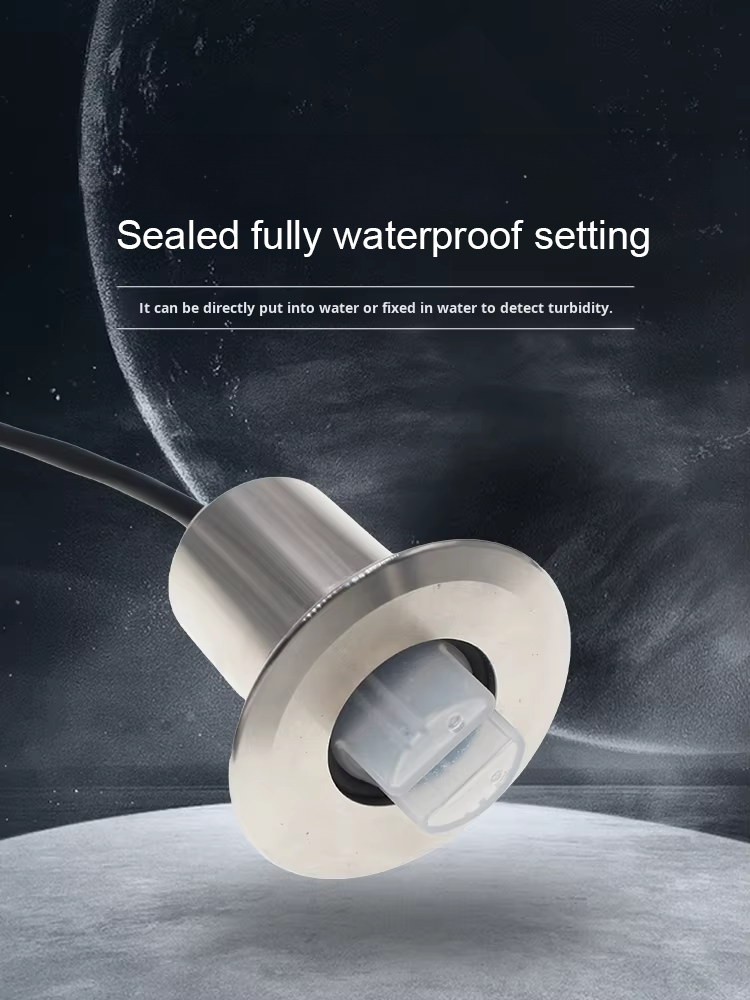I. Introduction
Stainless steel infrared turbidity sensors are efficient and reliable water quality monitoring devices widely used in various industrial and agricultural settings. Their primary function is to measure the turbidity of liquids by shining infrared light through the liquid sample and measuring the degree of light scattering. This technology is crucial for ensuring water quality safety, optimizing production processes, and improving product quality.
II. Application Scenarios
-
Drinking Water Treatment
- In urban water treatment plants and rural drinking water management, infrared turbidity sensors are used to monitor the turbidity of water sources in real-time. When turbidity exceeds acceptable levels, these sensors can trigger water treatment equipment, ensuring safe water supply.
-
Industrial Wastewater Treatment
- Many industrial processes generate wastewater that must be treated before discharge. Infrared turbidity sensors can monitor the turbidity of wastewater, allowing companies to optimize treatment processes based on turbidity data, thereby meeting environmental standards.
-
Agricultural Irrigation
- In modern agriculture, infrared turbidity sensors help monitor the turbidity of irrigation water, allowing farmers to assess water quality and ensure that irrigation water is free from contamination, ultimately improving crop yield and quality.
-
Aquaculture
- In aquaculture, good water quality is essential for the healthy growth of fish. By monitoring the turbidity of the aquatic environment, aquaculture operators can adjust water quality in a timely manner, preventing diseases or deaths caused by excessively high turbidity.
-
Environmental Monitoring
- Infrared turbidity sensors are extensively used in water pollution monitoring. By deploying monitoring stations in rivers, lakes, and other water bodies, timely detection of water quality changes can be achieved, aiding in environmental protection efforts.
III. Significant Impact on Industry and Agriculture
-
Enhancing Water Quality Safety
- In both drinking and industrial water treatment processes, infrared turbidity sensors can provide real-time monitoring of suspended particles in water, ensuring water quality safety and reducing health risks associated with water pollution.
-
Increasing Production Efficiency
- For industrial enterprises, real-time monitoring of wastewater turbidity can optimize treatment processes and reduce production downtime, thereby lowering production costs. In agriculture, timely detection and adjustment of water quality can enhance crop growth efficiency.
-
Supporting Environmental Compliance
- Many countries set strict turbidity standards for industrial wastewater and drinking water. Infrared turbidity sensors help companies monitor water quality in real time, ensuring compliance with environmental regulations and reducing economic losses and legal liabilities due to violations.
-
Supporting Scientific Management and Decision-Making
- By integrating infrared turbidity sensors with data analytics and remote monitoring systems, businesses and farmers can obtain more accurate water quality data, supporting scientific decision-making and enabling the rational use of various resources.
-
Promoting Smart Agriculture and Industry Development
- With technological advancements and the development of IoT technologies, the application of infrared turbidity sensors will facilitate the emergence of smart agriculture and smart manufacturing, accelerating the digital transformation of both agriculture and industry.
IV. Conclusion
Stainless steel infrared turbidity sensors play a vital role in various industrial and agricultural applications. By enhancing the accuracy and timeliness of water quality monitoring, they not only ensure the safety of water for living and production but also improve production efficiency, support environmental compliance, and drive smart development. As technology continues to advance and application scenarios expand, infrared turbidity sensors will have an increasingly significant role in the future.
We can also provide a variety of solutions for
1. Handheld meter for multi-parameter water quality
2. Floating Buoy system for multi-parameter water quality
3. Automatic cleaning brush for multi-parameter water sensor
4. Complete set of servers and software wireless module, supports RS485 GPRS /4g/WIFI/LORA/LORAWAN
For more water sensor information,
please contact Honde Technology Co., LTD.
Email: info@hondetech.com
Company website: www.hondetechco.com
Tel: +86-15210548582
Post time: Jul-25-2025


